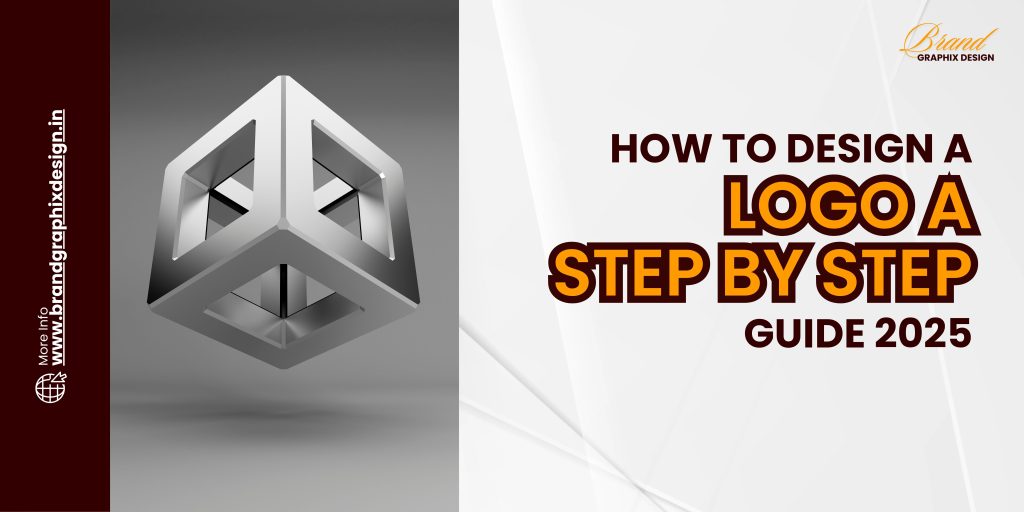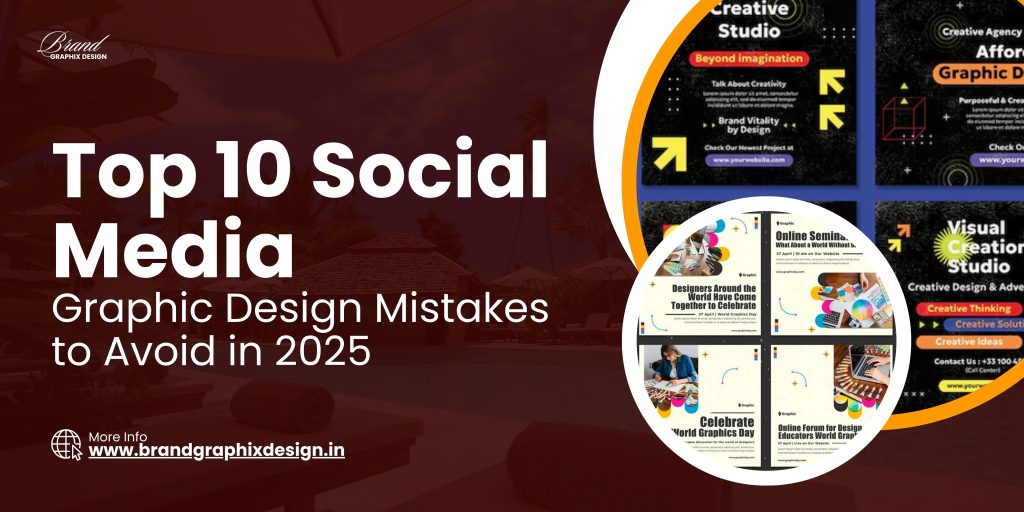A logo is the face of your brand. It’s the first thing people notice about your business and often the image they remember. A well-designed logo can establish brand identity, build trust, and set you apart from the competition. In 2025, designing a logo requires creativity, attention to detail, and a deep understanding of your brand. Whether you’re a startup or an established business looking to rebrand, this step-by-step guide will help you create a logo that captures the essence of your brand.
1. Understand Your Brand Identity
Before you start designing your logo, it’s crucial to have a clear understanding of your brand identity. Your logo should reflect your brand’s personality, values, and goals. Ask yourself, what does your brand stand for? What message do you want to convey to your audience? Knowing your brand identity will guide your design choices and ensure that your logo aligns with your overall branding strategy.
- Define your brand’s mission and vision.
- Identify your target audience and their preferences.
- Consider your brand’s personality traits (e.g., modern, traditional, playful).
2. Research the Industry and Competitors
Researching your industry and competitors is an important step in the logo design process. Look at the logos of other businesses in your industry to identify common trends and themes. This will help you understand what works well and what doesn’t. However, while it’s important to be aware of industry trends, your logo should still be unique and stand out from the competition.
- Analyze logos from competitors and identify common design elements.
- Look for gaps or opportunities to differentiate your logo.
- Ensure your logo is unique and not easily confused with others.
3. Choose the Right Design Style
The design style you choose for your logo will play a big role in how it’s perceived. Whether you opt for a minimalist, vintage, modern, or playful design, it should align with your brand identity and appeal to your target audience. Consider what emotions or messages you want your logo to convey and choose a style that reflects those intentions.
- Decide on a design style that aligns with your brand (e.g., minimalist, vintage).
- Consider how the design style will resonate with your target audience.
- Ensure the style is versatile enough to work across different platforms.
4. Select the Right Colors
Colors are a powerful tool in logo design, as they can evoke emotions and convey messages. The colors you choose should reflect your brand’s personality and appeal to your target audience. For example, blue is often associated with trust and professionalism, while red can evoke excitement and passion. It’s also important to ensure that your logo looks good in black and white, as it may be used in various formats where color isn’t available.
- Choose colors that reflect your brand’s personality and values.
- Consider the psychological impact of different colors.
- Ensure your logo is effective in both color and black and white.
5. Pick the Right Font
Typography is another key element in logo design. The font you choose should complement the overall design and reflect your brand’s voice. For example, a sleek, modern font may be suitable for a tech company, while a handwritten or script font may work well for a brand that wants to convey creativity or elegance. Make sure the font is readable and works well in different sizes and formats.
- Select a font that complements your design style and brand personality.
- Ensure the font is legible in different sizes and formats.
- Consider using a custom font to make your logo unique.
6. Create Multiple Sketches and Concepts
Before settling on a final design, it’s important to explore different ideas and concepts. Start by sketching out multiple versions of your logo, experimenting with different layouts, fonts, and symbols. This brainstorming phase allows you to explore various options and find the best representation of your brand. Don’t be afraid to think outside the box and try unconventional ideas.
- Sketch out multiple versions of your logo to explore different ideas.
- Experiment with various layouts, fonts, and symbols.
- Consider feedback from team members or clients during this phase.
7. Refine Your Design
Once you’ve explored various concepts, it’s time to refine your design. Choose the best elements from your sketches and combine them into a cohesive design. Pay attention to details like spacing, alignment, and proportions to ensure your logo is visually balanced. This is also the time to fine-tune your color scheme, typography, and any other design elements.
- Combine the best elements from your sketches into a cohesive design.
- Ensure the logo is visually balanced with proper spacing and alignment.
- Fine-tune colors, fonts, and other design elements for a polished look.
8. Get Feedback and Make Adjustments
Feedback is an essential part of the design process. Share your logo design with team members, clients, or even a small focus group to get their opinions. Constructive feedback can help you identify any areas that need improvement and ensure your logo resonates with your target audience. Based on the feedback, make any necessary adjustments to your design before finalizing it.
- Share your logo design with others to get feedback.
- Consider feedback from various perspectives, including customers.
- Make adjustments based on feedback to improve the design.
9. Test Your Logo in Different Formats
Your logo will be used in various formats and sizes, from business cards to billboards. It’s important to test your logo across different mediums to ensure it remains effective and recognizable. Check how your logo looks on digital screens, print materials, and merchandise. Make sure it’s scalable and retains its quality and clarity in different sizes.
- Test your logo in different formats, such as digital, print, and merchandise.
- Ensure the logo is scalable and maintains clarity in various sizes.
- Check how the logo appears on different backgrounds and materials.
10. Finalize and Save Your Logo Files
Once you’re satisfied with your logo design, it’s time to finalize it and save the files. Make sure you have the logo saved in different formats, such as PNG, JPEG, SVG, and PDF, to accommodate various uses. It’s also important to save the logo in both color and black-and-white versions. Keep a high-resolution version for print and a web-optimized version for digital use. Finally, create a brand style guide that outlines how the logo should be used to maintain consistency across all platforms.
- Save your logo in multiple formats (PNG, JPEG, SVG, PDF).
- Create both color and black-and-white versions.
- Develop a brand style guide for consistent logo usage.
Design a Logo that Reflects Your Brand’s Identity
Designing a logo is a critical step in building your brand’s identity. By following this step-by-step guide, you can create a logo that effectively communicates your brand’s values and resonates with your audience. If you need professional assistance in designing a logo that truly reflects your brand, we’re here to help. Contact us today at +91 91189 11171 to get started on creating a logo that stands out.



